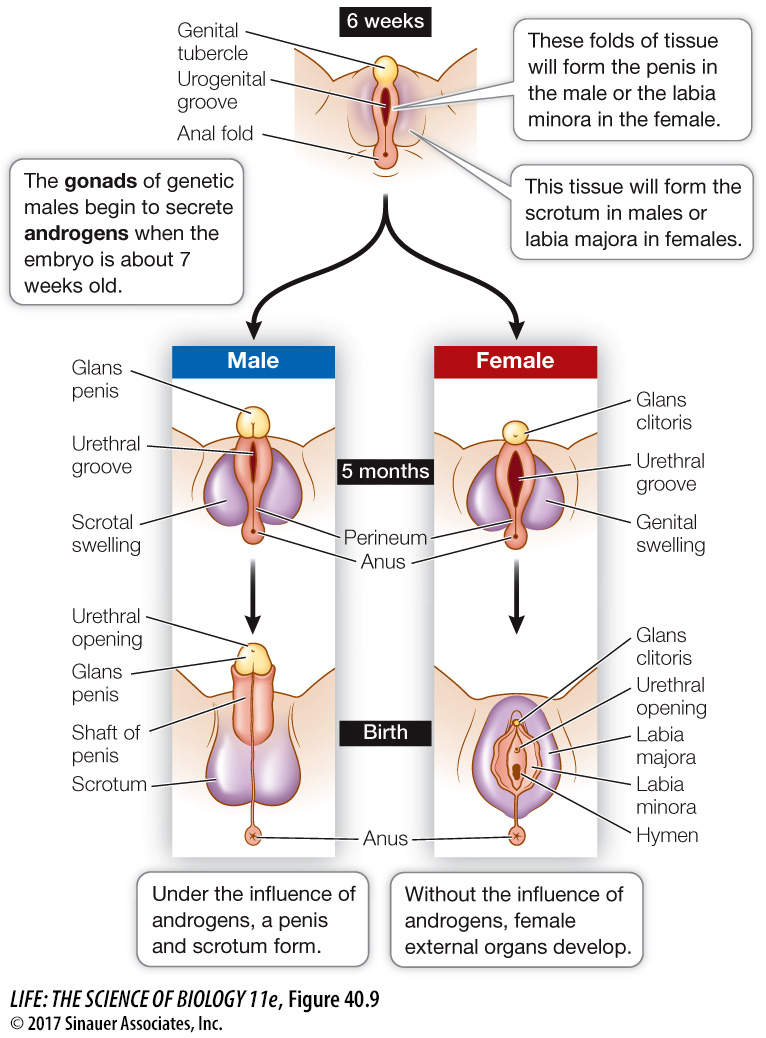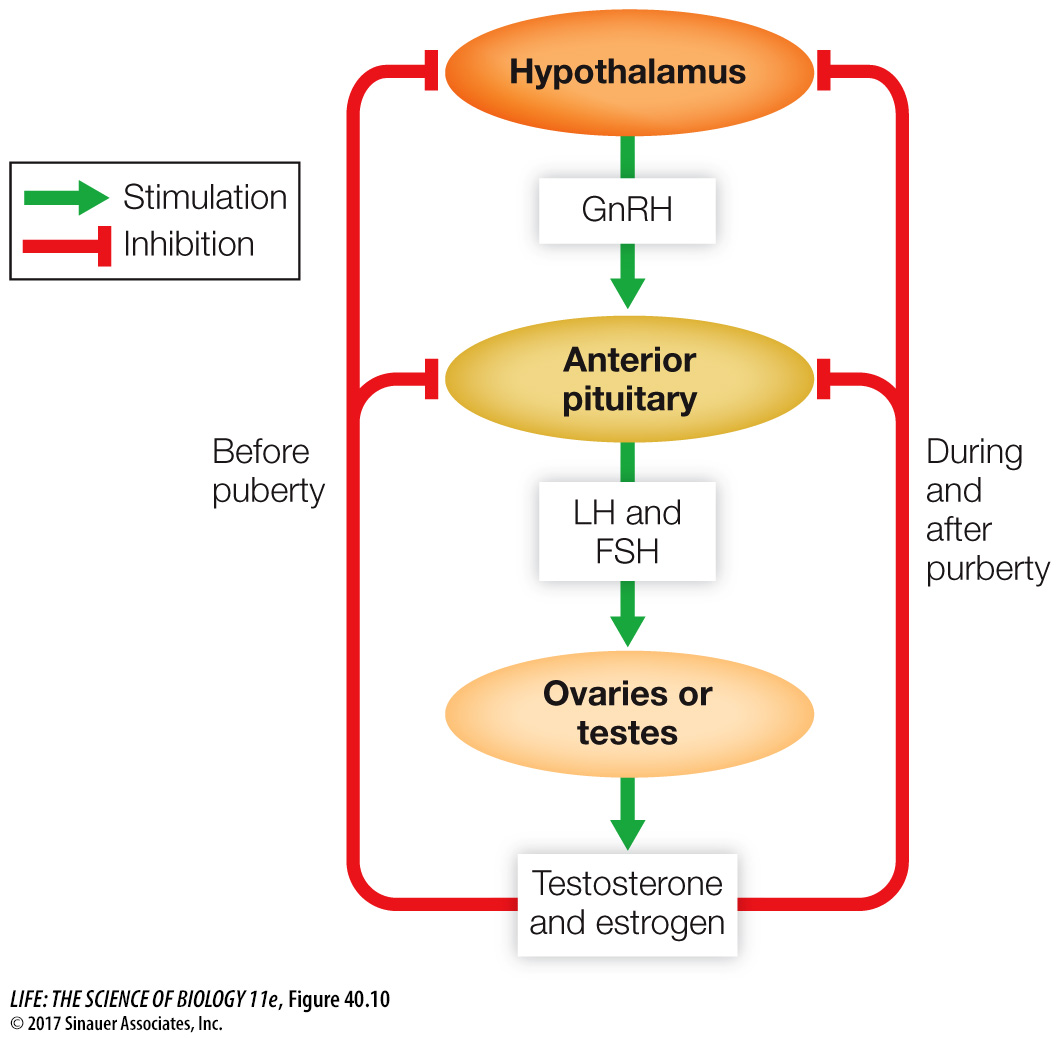Sex steroids control sexual development
Hormones also control many developmental processes in vertebrates. One example already mentioned in Key Concept 40.2 is the influence that the anterior pituitary growth hormone has on growth. Other examples are the hormones involved in sex development. The gonads—the testes of the male and the ovaries of the female—
Media Clip 40.1 The Testosterone Factor
www.life11e.com/
856
PHENOTYPIC SEX DETERMINATION The sex steroids determine whether a mammalian embryo develops into a phenotypic female or male. In humans, the gonads of an early embryo are undifferentiated. Beginning in about the seventh week of development, the expression of genes on the Y chromosome of an XY individual normally causes the undifferentiated gonads to produce androgens. In response to androgens, the reproductive system develops the male phenotype. If no Y chromosome is present (i.e., the individual is genotype XX), androgens are not produced at this time and female structures develop (Figure 40.09). After birth, the sex steroids control the maturation of the reproductive organs and the development and maintenance of secondary sexual characteristics, such as breasts and facial hair.

Question
Q: What do you think the effect of a mutation that results in nonfunctional androgen receptors would be?
A mutation resulting in nonfunctional androgen receptors would result in XY individuals with female phenotype including external sex organs and secondary sexual characteristics.
Phenotypic sex determination provides a good example of the importance of receptors in hormonal control mechanisms. Individuals are occasionally born who because of a mutation do not have functional androgen receptors—
PUBERTY In juvenile humans, the sex steroids are produced at low levels. At puberty (around age 12 or 13), sex steroid production increases rapidly. Why does this sudden increase occur? In both juvenile and adult humans, the activities of the gonads are controlled by the anterior pituitary tropic hormones luteinizing hormone (LH) and follicle-

857
In females, increasing levels of LH and FSH at puberty stimulate the ovaries to increase their production of the female sex hormones. The increased circulating levels of these hormones stimulate the development of the traits of a sexually mature woman: enlarged breasts, vagina, and uterus; broadened hips; increased subcutaneous fat; pubic hair; onset of menstrual and ovarian cycles (see Figure 42.11), and behavioral changes. In males, an increasing level of LH stimulates groups of cells in the testes to increase their synthesis of testosterone, which in turn initiates the physiological, anatomical, and behavioral changes associated with adolescence. The voice deepens, hair begins to grow on the face and body, and the testes and penis grow larger. Testosterone also stimulates bone and skeletal muscle growth. FSH in males stimulates production of sperm.
The roles that sex steroids play in adult sexual behavior and reproduction will be described in Chapter 42.